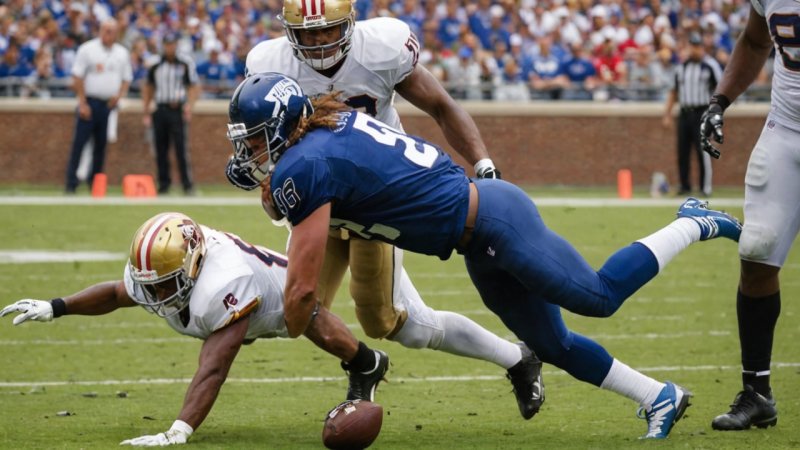In the fast-paced and physically demanding world of football and rugby, tackling is a fundamental aspect of the game. However, the technique used for tackling can significantly impact a player's safety and effectiveness on the field. This article will compare head-first tackling and shoulder-first tackling techniques, exploring their pros, cons, and differences, ultimately providing insights into which method might be more beneficial for players aiming to improve performance while ensuring safety.
Overview of Tackling Techniques
Tackling techniques can be broadly categorized into two types: head-first tackling and shoulder-first tackling. Each technique has its own merits and drawbacks, and understanding these can help players make informed decisions about their approach to tackling.
Head-First Tackling
Head-first tackling, often referred to as 'diving tackle,' involves leading with the head to make contact with the opponent. This technique can be effective in stopping an opponent quickly but carries significant risks.
Pros of Head-First Tackling
- Speed: A head-first tackle can be executed rapidly, allowing the player to close in on their opponent quickly.
- Lower Center of Gravity: By diving forward, players can lower their center of gravity, potentially taking down larger opponents.
- Effective in Specific Scenarios: In certain situations, such as preventing a touchdown or stopping a breakaway, this tackle can be decisive.
Cons of Head-First Tackling
- Injury Risk: This technique poses a high risk of head and neck injuries, including concussions.
- Penalty Risks: Many leagues have penalized head-first tackles due to safety concerns, leading to potential fouls.
- Less Control: Players may have less control over their body position, increasing the likelihood of missing the tackle or causing unintended harm to themselves or the opponent.
Shoulder-First Tackling
Shoulder-first tackling focuses on using the shoulder as the primary point of contact. This technique emphasizes safety and control, making it a preferred method in many coaching programs.
Pros of Shoulder-First Tackling
- Safety: This method significantly reduces the risk of head and neck injuries, as the head is kept out of the primary point of impact.
- Better Control: Players can maintain better body control and positioning, allowing for more effective tackles.
- Legal in Most Leagues: Shoulder-first tackles are generally accepted and encouraged in various leagues, minimizing the risk of penalties.
Cons of Shoulder-First Tackling
- Requires Technique: Mastering this technique can take time and practice, as players need to learn proper angles and body positioning.
- Less Immediate Impact: The impact may not be as forceful as a head-first tackle, potentially allowing opponents to break free more easily.
- Physical Demands: This technique may require greater physical conditioning and strength, as players often need to push through opponents.
Comparative Analysis
When comparing head-first and shoulder-first tackling, it's essential to consider various factors such as player safety, effectiveness, and the overall impact on the game.
Player Safety
Head-first tackling poses a significant risk of injury, particularly concussions, while shoulder-first tackling prioritizes player safety by minimizing head involvement. Players using shoulder-first techniques tend to have lower rates of injury, which is critical for sustaining their careers and the overall health of the sport.
Effectiveness
While head-first tackles can be executed quickly and effectively in certain situations, the risk often outweighs the benefits. Shoulder-first tackling, while potentially less impactful in terms of immediate force, allows for greater control and technique, which can lead to more successful tackles over time.
Coaching and Development
Coaching programs increasingly emphasize shoulder-first tackling due to its safety and legality in games. Many organizations are creating training modules focused on proper technique, which helps players develop skills that not only improve their performance but also ensure their safety.
Conclusion
In conclusion, while both head-first and shoulder-first tackling have their pros and cons, the shoulder-first technique emerges as the safer and more effective method for players looking to enhance their performance while minimizing injury risks. As the game evolves, prioritizing safety without sacrificing effectiveness is paramount, and adopting shoulder-first tackling techniques can lead to a more sustainable and enjoyable experience for athletes in football and rugby.






